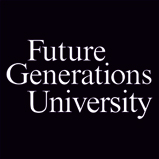__________________
Over the next several months, Equity & Empowerment will be releasing entries summarizing some of our earlier work to give a glimpse of the diversity of our organization and the versatility of the SEED-SCALE method which guides us. There will be 3 themed sets (series), and each set will consist of 4 entries. We hope you enjoy the first installment in our Health Series!
__________________
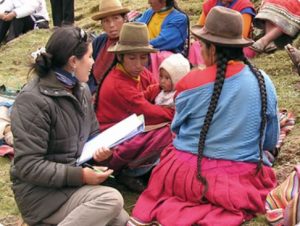
Original work by Laura Altobelli, Patricia Paredes, and Carl E. Taylor
Summary by Associate Professor, Noam Schimmel
SEED-SCALE illustrates how the most significant and sustainable achievements in community development typically result from a combination of bottom-up, top-down, and outside-in interventions. When these approaches work together, synergistically, they create a powerful framework for social change.
In Peru, in 1992, when the Shining Path terrorist group was defeated, villages in the Peruvian countryside looked to create healthcare programming that had been neglected during the many years of civil war and Shining Path attacks.
The Peruvian government was initially oriented towards a traditional top-down approach of bringing skilled doctors and other medical professionals to health centers located outside the villages, with the resulting high costs this would entail.
Villagers, however, were interested in incorporating a bottom-up approach in which community health workers, based in the villages, would provide basic medical knowledge and care, and serve as a link to more advanced healthcare provision beyond the villages.
They wanted a relationship of partnership that affirmed their dignity and capacity for contribution to their own health and well-being, rather than one dependent on others from outside their communities with little opportunity for self-help, self-organization, and collective leadership and action.
Villagers felt that the existing health centers were too far away from them and needed to be closer to home and locally based.
They complained that doctors in the past were not genuinely interested in their welfare as they wanted to return to private practice – often back in the city – and earn larger salaries. Villagers also felt that medicine for which they paid should be available for distribution locally, with greater village-based control of its dissemination.
In 1994, the Peruvian government responded positively to the requests of the villagers to create community-based health services. These were to become known as CLAS, Comunidades Locales de Administracion de Salud – Local Health Administration Communities.

Local residents would sit on the committees of each primary care facility. The government would hire some of the personnel and exercise some authority over the community based health centers, but the local management team would as well, insuring local ownership and participation and responsiveness to local needs and priorities. In 2007, the program was amended to allow for direct elections of local representatives to serve in each CLAS committee.
Starting as a relatively small program, CLAS blossomed and grew with great speed and spread across the country.
Pilot CLAS programs were begun in 1994… The project started with four primary-care facilities with CLAS committees in the Ayacucho region, and nine CLAS committees in the Ica region. Huge national demand quickly overwhelmed this initial planning, and about 250 more CLAS committees were organized by the end of that year. Four years later, in 1998, 548 of the 5,060 government health facilities were CLAS centers, with another 150 waiting to be recognized. By 2002, more than 2,000 CLAS run primary health-care centers were providing care for more than one-fourth of Peru’s people. (265)
Scaling up so dramatically was possible because, “for the first time, primary health-care services were able to manage some of their own funds to meet urgent needs for medicines and supplies, instead of having to wait weeks or months for the fulfilment of requests through the laborious public acquisitions system.”
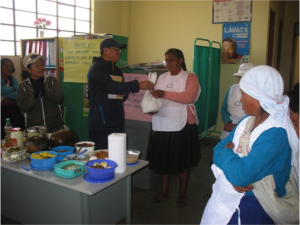
Other improvements followed, spurred on by CLAS. Improvements were made in the physical plant of
health centers, to make them more comfortable and inviting for users and to expand them, when appropriate. “CLAS could also decide to provide personnel incentives, hire additional staff, or bring in specialists. Communities, feeling this degree of control over their health services, became empowered.” (265)
Evaluations of CLAS conclude that it improves not just health outcomes, but also enables greater participation of women in governance and healthcare provision. It also encourages women to advance health outside the formal boundaries of healthcare provisions in community clinics and, more broadly, in domestic settings where behavior change can often yield dramatic health improvements that cannot be achieved to the same extent in health clinics alone.
“The CIUP (Research Center of Universidad del Pacifico) and UNICEF studies found that nearly half of the committee members were women who had served in leadership roles in volunteer public-service programs…” Both studies showed that these women were leaders in mobilizing communities, and they continued as volunteers, performing a variety of essential functions. For example, they promoted behavior changes in their communities that supported immunization, nutrition, and maternal care. (267) In some urban areas, CLAS committees raised enough money to expand both their facilities and activities, such as building a wing for maternity services while also organizing effective community outreach. (268)
UNICEF in particular noted how CLAS was genuinely community based, community owned, and responsive to the community’s self-assessed needs.
The UNICEF evaluation confirmed the effectiveness of SEED-SCALE principles: the strengths of CLAS derived from “the involvement of community members… CLAS committees met regularly; meetings were led by a community member; women took part in the meetings and decision-making; and the needs of the socially and economically disadvantaged were addressed. CLAS committees participated in decisions to expand clinic hours, reduce waiting time, and increase the number and kinds of personnel available. There were also more home visits and promotional activities in the community. About 90% of CLAS health facilities reported such involvement in the community; non-CLAS figures were much lower.” (268)
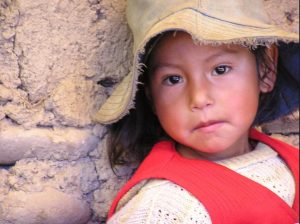
The Peruvian government has similarly concluded positively that CLAS enables local participation and control.
In February 2000, Peru’s Ministry of the Presidency issued a working paper citing the contributions of CLAS: “With stronger community institutions we can now transfer to the people competencies, responsibilities, and resources. Among the impacts of our communities’ institutional strengthening is the emergence of the people’s capacity to manage programs and projects. The Local Health Care Services Administration Committees (CLAS) are an example of participation in both identifying needs and managing services.” (271)
More recent assessments of CLAS have similarly concluded that it both meets the criteria of Seed-Scale and achieves substantial improvements in healthcare provision and community participation in that provision.
In 2006, the World Bank published two books analyzing and making recommendations on how to best achieve development in Peru, with a focus on policies in favor of the poor. The benefits of CLAS are extolled in both volumes. Citing the studies on CLAS and their own assessments, they describe CLAS as having “flexible labor management, autonomy in financial management, and effective channels of accountability that translate into better client satisfaction, greater access of the population to services, greater quantity of intramural and health promotion activities.” (271)
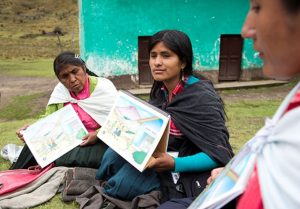
CLAS demonstrates Seed-Scale at work in a way that illustrates an integrated, holistic approach to
community health and well-being that invites local participation, control, and responsibility and enables quality, improved health care. This health care provision is successfully reaching expanded populations and providing affordable and accessible health care in Peru and serves potentially as a model for other countries.
**Please note that all page numbers are references to Just and Lasting Change: When Communities Own Their Futures by Future Generations founders, Daniel C. Taylor and Carl E. Taylor. Just and Lasting Change is available through Johns Hopkins University Press here.
